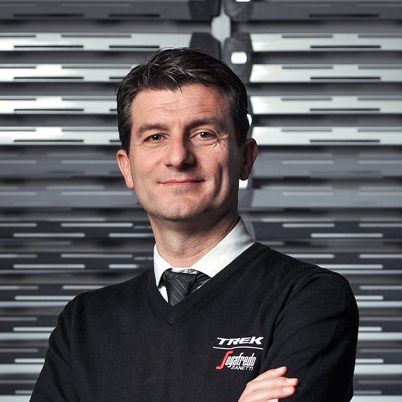

Sports manager Team Dimension Data
“Sprint stages do not necessarily have to end in a sprint. I remember stages of which everyone said it would be a boring day with bunch sprint, but it was a spectacle for hours. The windy stage in the 2013 Tour de France to Saint-Amand-Monrond where Mark Cavendish won is a good example. After QuickStep set up an echelon, the last hundred kilometers were a continuous battle. In the end, only eight riders remained. For me one of the most beautiful stages in the Tour history. That makes it difficult to categorize certain stafes as sprint stages.
My proposal is to considerably shorten the flat stages. As a result, more riders will be motivated to do something. For the peloton, a short stage is much harder to control. If we only use all transition stages to cover long distances, then I can tell you already now that you have a lot of boring stages in Grand Tour. These kind of stages are more sleep-inducing than a sleeping pill. What an organizer also has to pay attention to is that he does not join the sprint stages. Not during the opening week you have flat, meaningless stages for days after each other. Then make sure that for example, stage 2, 4, 7, 10, 14, 18 and 20 have the profile of a sprint stage. A first flat week through Normandy and Brittany and only then to the mountains ensures that the attraction value will decrease in the early days.”

Sports Director Deceuninck-QuickStep
“I am convinced that sprint stages can be interesting. Perhaps you are talking about the audience that is really interested in cycling and understanding what is involved to make a sprint go smoothly. I think cycling is mainly boring due to boring TV commentators. They are unable to keep their stories interesting in a flat stage with five to six hours of live television. It wouldn’t be a problem for me if there were six or seven stages for the fast men in a Grand Tour. “

Sports Director Mitchelton-Scott
“You can have boring and exciting sprint stages. You have to look at the individual profile of each stage. Are you riding along the coast or in open areas where the wind can play a role? I think the distance of a stage has a lot of influence on the attractiveness of the race. Flat stages of more than two hundred kilometers are no longer of this time. Make shorter stages of 150 kilometers here, which means that you will race much more aggressively. Attackers then believe much more in their chances. Anyway, I am a big advocate of shorter stages on every terrain . That’s only beneficial for the sport.”

Team Manager Trek-Segafredo
“Difficult to say whether the limit should be five or, for example, six flat stages. In a Grand Tour, there must be a balance between flat stages, stages through the hills, low mountains and high mountains and a number of time trials. Riders with various specialties must have a number of opportunities. I don’t think shorter flatter stages will be more spectacular. Yes, in the high mountains, short stages are more fascinating, but in a sprint stage the distance does not make a big difference. There are too many alliances between the sprinter teams to organize the chase together. I think as an organizer you should pay more attention to the television broadcast. These live recordings must be made much more interesting in the flat stages with interviews, data etc. A sprint remains extremely spectacular with cyclists who risk their lives at 70 kilometers per hour. Though I can understand that only the last five kilometers are really interesting to the general public. That is why it is the task of the TV producers to turn the lead out to the sprint into a more fascinating TV show. ”

